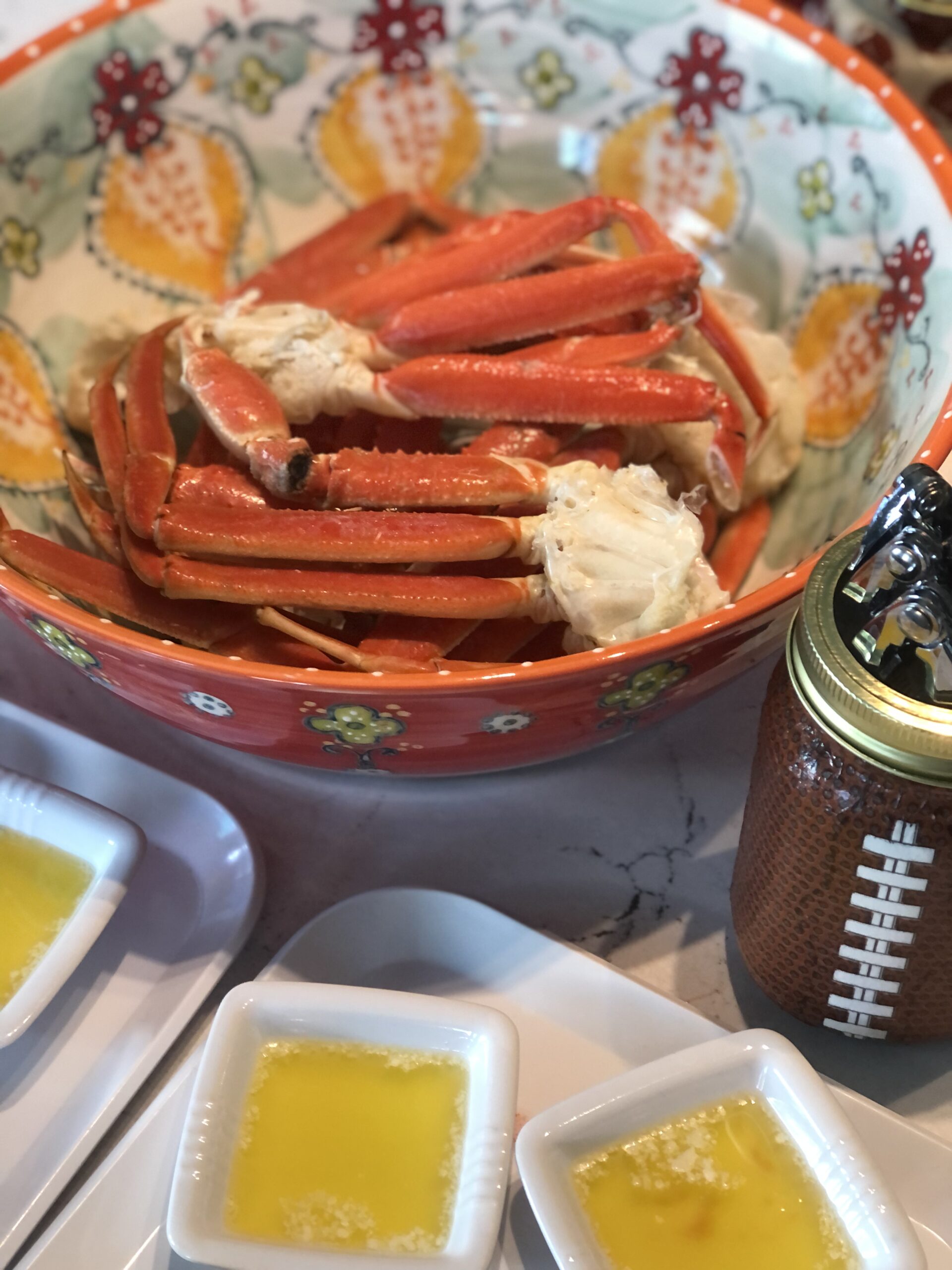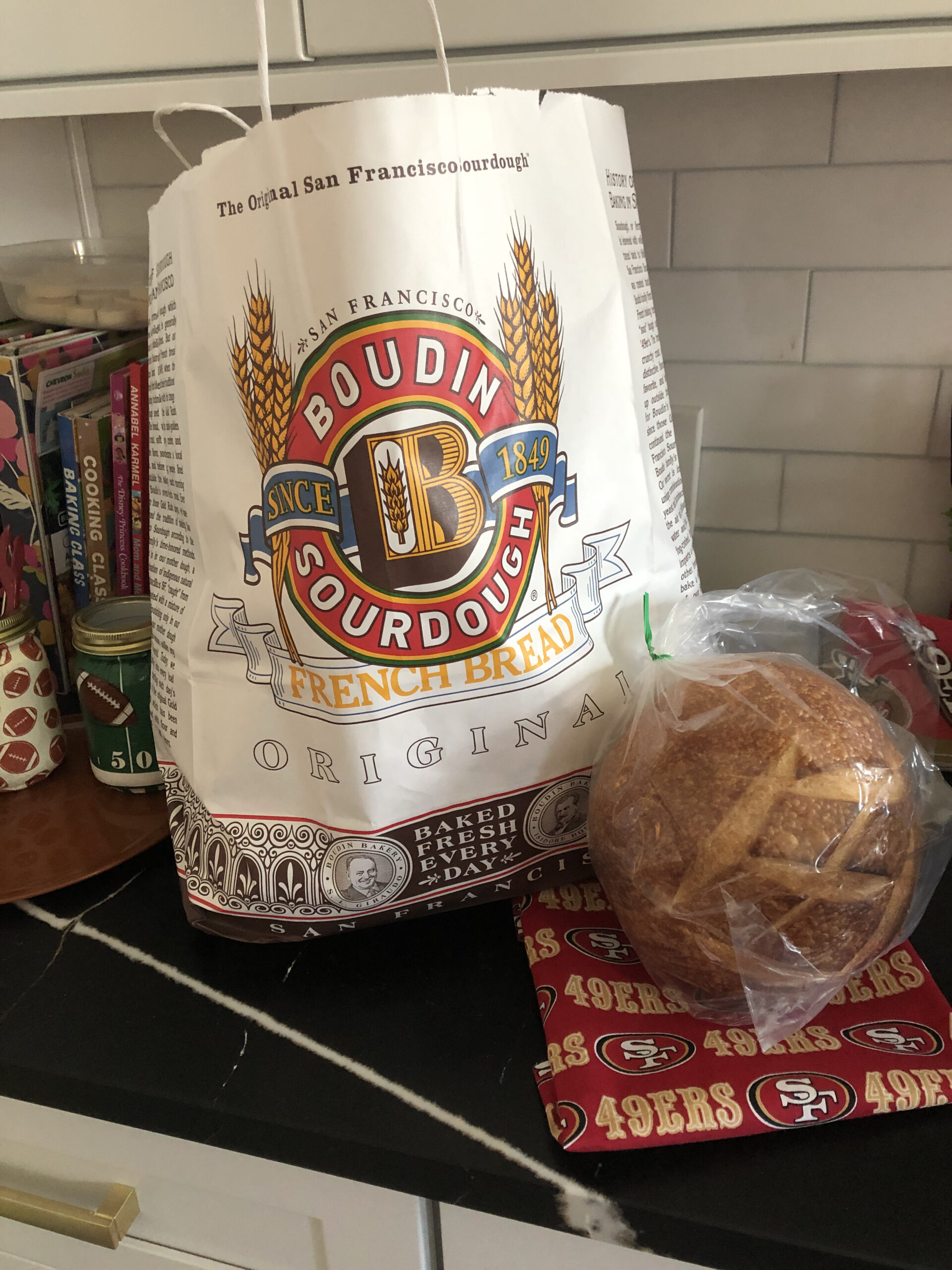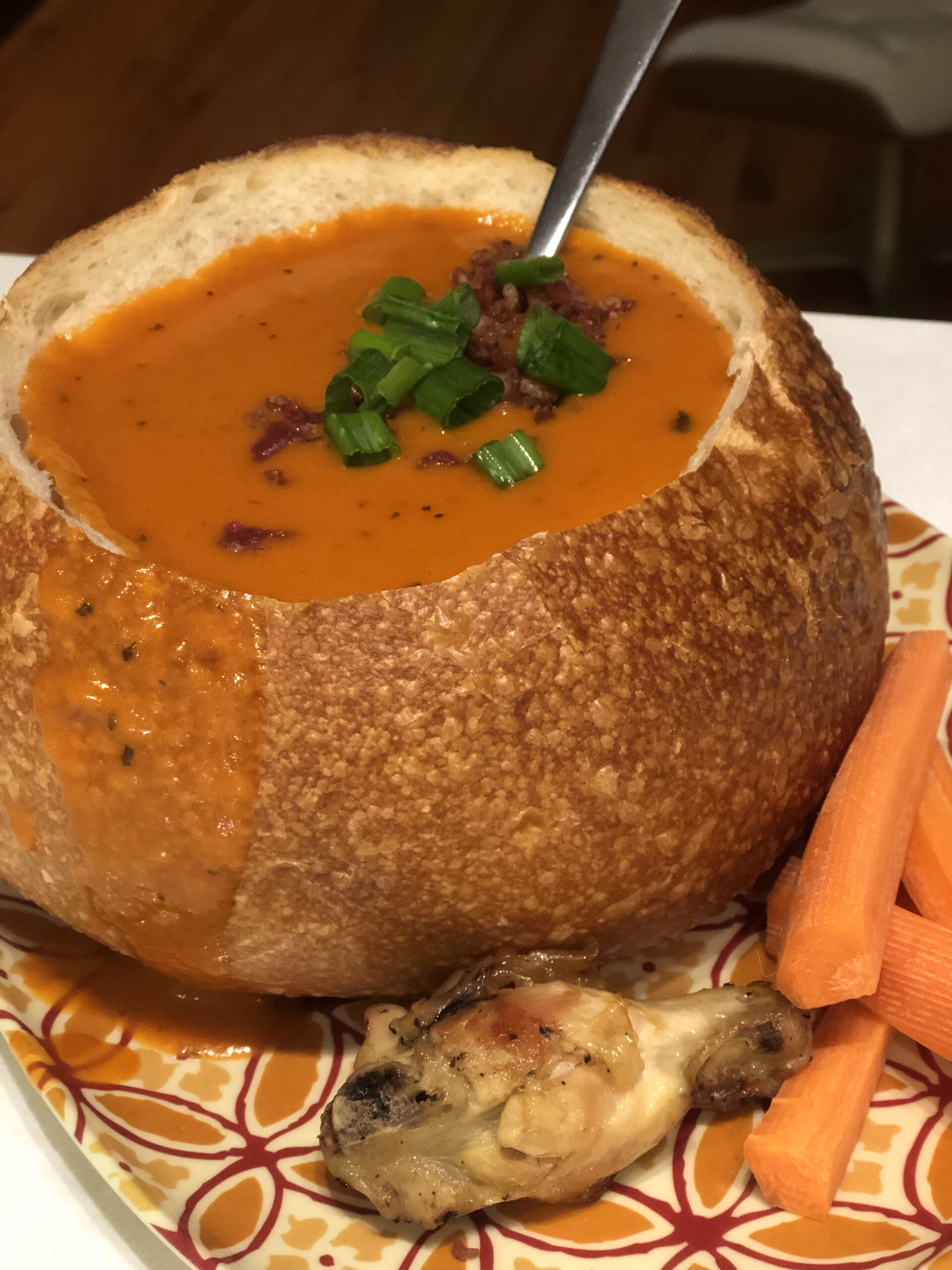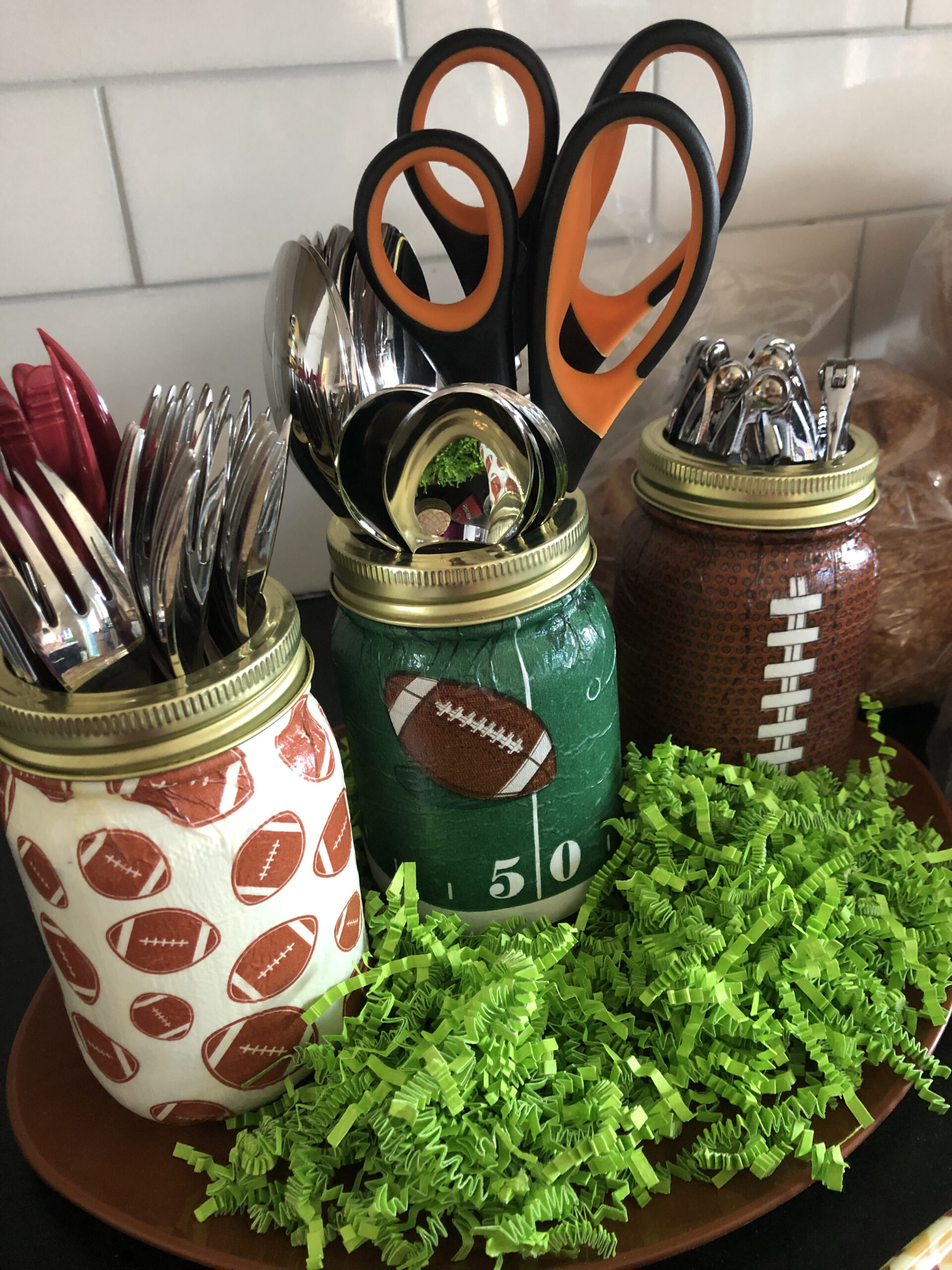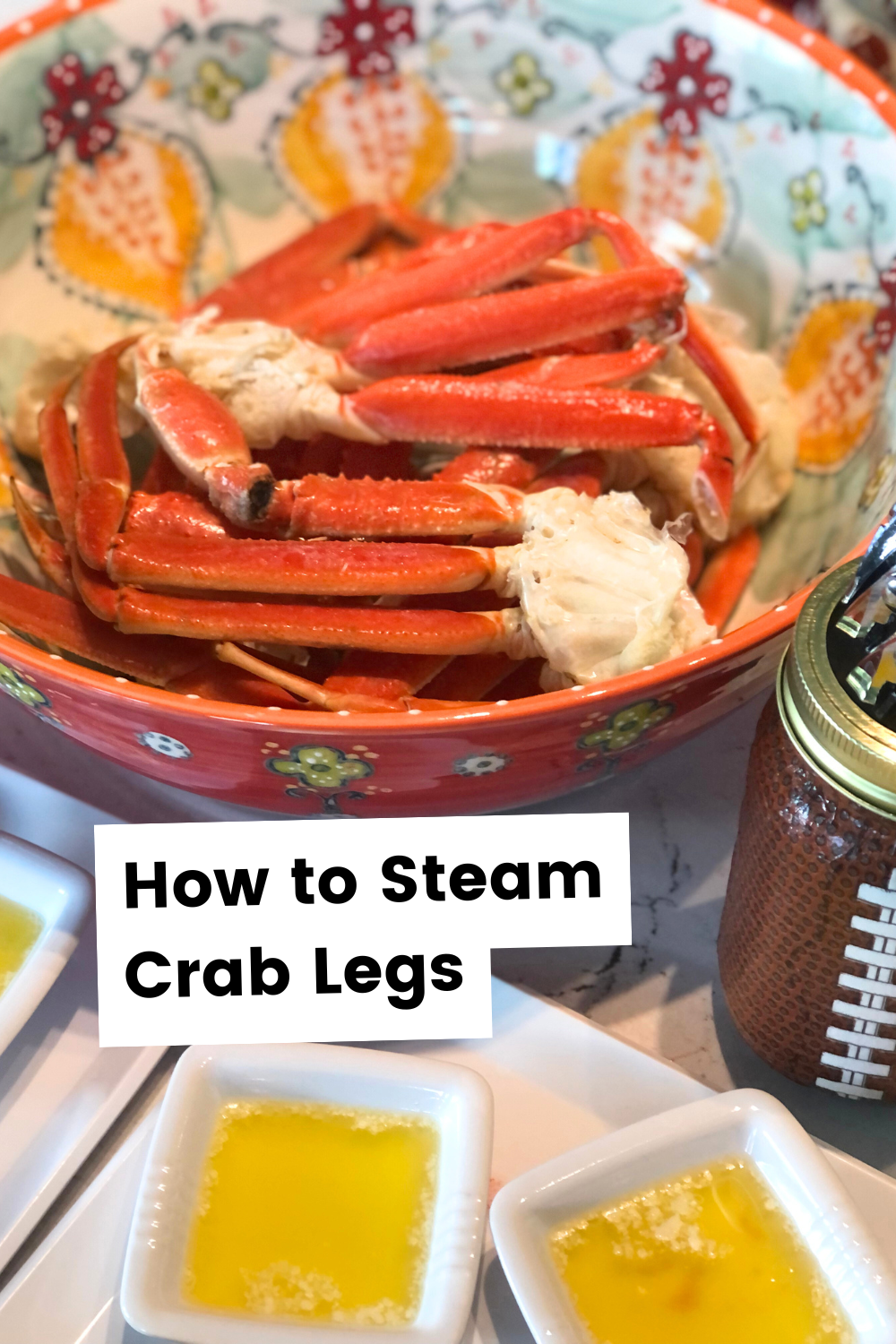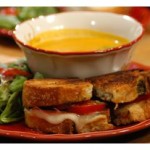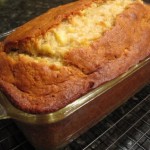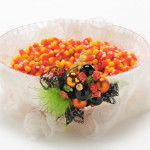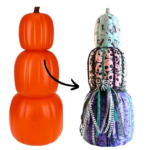For this game day menu….I went with a 49er theme! Crab Legs and Tomato Soup in Boudin Sourdough Bread Bowl!
Steaming crab legs is a simple and delicious way to cook them. Here’s a step-by-step guide to steaming crab legs:
Ingredients:
- Crab legs (usually pre-cooked, especially if they’re frozen)
- Water
- Optional: seasonings like Old Bay, lemon slices, or garlic
Equipment:
- Large pot with a lid
- Steamer basket or a colander (optional)
Instructions:
- Prepare the Crab Legs: If you’re using frozen crab legs, run them under cold water to defrost them slightly, though they can also be steamed straight from frozen.
- Boil the Water: Fill the pot with about 2 inches of water (enough to create steam but not to touch the crab legs). Add any seasonings you like, such as Old Bay seasoning, lemon slices, or garlic. Bring the water to a boil over medium-high heat.
- Set up the Steamer: Once the water is boiling, place a steamer basket or a colander inside the pot, ensuring that the water does not touch the crab legs. If you don’t have a steamer basket, you can just lay the crab legs directly in the pot.
- Steam the Crab Legs: Cover the pot with a lid and steam the crab legs for about 5-7 minutes if they are pre-cooked or 10-15 minutes if they are raw or frozen. The crab legs are done when they are heated through (they should be steaming hot and the shells will be a vibrant red).
- Serve: Use tongs to remove the crab legs from the pot. Serve immediately with melted butter, lemon wedges, and any dipping sauces you like.
Eddie drove so far for us to have the authentic Boudin bread bowls! Thank you EDDIE!!!
Cutting a bread bowl is simple, but you want to do it carefully to create a hollow space for soup or dip while keeping the bowl intact. Here’s how to do it:
Steps to Cut a Bread Bowl:
- Choose the Right Bread: Use a round, sturdy loaf of bread, like sourdough, which will hold its shape. Ensure the bread is fresh, but not too soft, or it might collapse when cut.
- Prepare the Bread: Place the bread on a clean cutting surface, like a cutting board.
- Slice Off the Top: Use a serrated knife to slice off the top of the bread, about 1-2 inches down. This will create the “lid” for the bread bowl. Set this piece aside; you can use it to cover the bowl or as dipping pieces.
- Hollow Out the Inside: Carefully begin to hollow out the bread by gently cutting around the inside with the serrated knife, leaving about an inch of bread on the sides and bottom. Be careful not to cut through the bottom of the bread, as you need it to hold the contents.As you cut, gently pull out the pieces of bread. You can tear them into pieces or save them for dipping later.
- Optional: Toast the Bread Bowl: If you like a bit of extra crunch, you can place the hollowed-out bread bowl in the oven for a few minutes at 350°F (175°C) to toast the inside slightly. This can help it hold up better if you’re serving a runny soup.
- Fill with Soup or Dip: Once your bread bowl is ready, pour in your soup, stew, or dip! Serve the lid on the side for guests to dip, or use it as a cover.
I used fancy store bought tomato soup and added a selection of toppings. Plus I made some chicken wings for a little side protein. Tomato soup is delicious on its own, but adding the right toppings can elevate it to a whole new level! Here are some great options:
1. Grilled Cheese Croutons:
- A classic pairing with tomato soup! Cut a grilled cheese sandwich into small squares or strips and place them on top for a crispy, cheesy crunch.
2. Basil:
- Fresh basil leaves or a sprinkle of chopped basil add a burst of fresh, herby flavor that complements the tomato soup perfectly.
3. Crumbled Bacon:
- Crispy bacon adds a savory, salty crunch that contrasts nicely with the smoothness of the soup.
4. Shredded Cheese:
- Melted cheese, like cheddar, mozzarella, or Parmesan, makes the soup extra creamy and comforting.
5. Sour Cream or Crème Fraîche:
- A dollop of sour cream or crème fraîche adds a creamy, tangy contrast to the acidity of the tomatoes.
6. Roasted Garlic:
- Roasted garlic cloves offer a rich, sweet, and mellow flavor that enhances the tomato soup.
7. Olive Oil Drizzle:
- A little drizzle of good quality olive oil can add richness and a smooth finish to the soup.
8. Cracked Black Pepper:
- Freshly cracked black pepper adds some heat and spice to balance the sweetness of the tomatoes.
9. Croutons or Toasted Bread:
- Add some crunch with homemade or store-bought croutons, or serve with a side of toasted baguette or sourdough for dipping.
10. Chili Flakes:
- If you like a little heat, sprinkle some chili flakes on top for an extra kick.
11. Pesto:
- A spoonful of pesto (basil, sun-dried tomato, or even a spinach pesto) can add a fresh, herbaceous flavor that pairs well with tomato soup.
12. Fresh Parmesan:
- Shaved or grated Parmesan can bring a salty, nutty flavor to the soup that complements the tomatoes.
Feel free to mix and match toppings to suit your preferences or to get creative with different combinations!
Make sure you have crab eating tools on hand! If you love my little jars….. I have the tutorial in this post.
Eating crab legs can be a little tricky, but with the right tools, it becomes much easier! Here are some of the best tools for enjoying crab legs:
1. Crab Leg Crackers:
- These are specially designed for cracking open the hard shells of crab legs. They look similar to lobster crackers, with a strong, adjustable mechanism that helps break open the shell without crushing the delicate meat inside.
2. Seafood Picks:
- These small, narrow forks are perfect for extracting the meat from the smaller, more intricate parts of the crab legs. They help get every last bit of meat without making a mess.
3. Crab Forks:
- Similar to seafood picks, but with a longer handle, crab forks are great for reaching into the leg joints and pulling out meat, especially when the pieces are a bit more stuck or narrow.
4. Nutcracker:
- A heavy-duty nutcracker can also work for cracking open crab legs. The stronger, sturdier design allows you to apply enough pressure to break the shells without damaging the meat.
5. Crab Mallet:
- A wooden or rubber crab mallet can be used to gently tap the crab legs to crack them open, especially useful if you’re working with particularly tough shells. It’s also a great way to avoid making a mess with a tool that could crush the meat.
6. Scissors (Seafood Shears):
- Seafood scissors or shears are designed to cut through the shells of crab legs easily, making it easier to remove the meat without needing to crack open the entire shell. This is great for making clean, neat cuts.
7. Bib or Crab Claw Napkins:
- While not a tool to crack the crab, having a bib or napkins nearby is essential, as eating crab can get messy! The bib will help protect your clothes from any juice or butter splatters.
8. Small Bowl for Butter:
- A bowl for melted butter is essential for dipping your crab meat. It enhances the flavor and is just a part of the experience!
9. Tongs:
- If you’re working with hot crab legs, tongs are useful for safely handling the legs and dipping them into the butter.
These tools will help make your crab-eating experience smoother, cleaner, and more enjoyable!
Happy game day eating! I hope you enjoy this menu idea! Please pin and share the posts you love! XOXO Cathie
